#aquaculture
Text
"When Francois Beyers first pitched the concept of 3D ocean farming to the Welsh regulators, he had to sketch it on napkins.
Today the seafood farm is much more than a drawing, but if you walked along the Welsh coastal path near St David’s, all you’d see is a line of buoys. As Beyers puts it: “It’s what’s below that’s important.”
Thick tussles of lustrous seaweed suspend from the buoys, mussels cling to its furry connective ropes and dangling Chinese lantern-esque nets are filled with oysters and scallops.
“It’s like an underwater garden,” says Beyers, co-founder of the community-owned regenerative ocean farm, Câr-y-Môr. The 3-hectare site is part of a fledgling sector, one of 12 farms in the UK, which key players believe could boost ocean biodiversity, produce sustainable agricultural fertiliser and provide year-round employment in areas that have traditionally been dependent on tourism.
Created in 2020 by Beyers and six family members, including his father-in-law – an ex-shellfish farmer – the motivation is apparent in the name, which is Welsh for “for the love of the sea”. ...
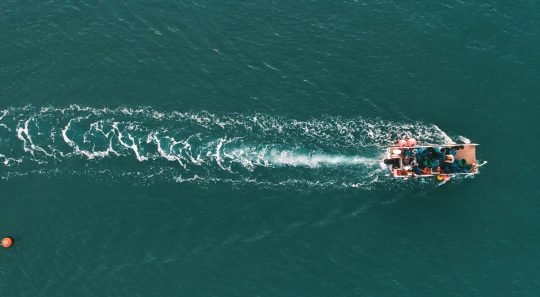
Pictured: Drone shot of Câr-y-Môr, which is on the site of abandoned mussel farms. Image: Scott Chalmers
Ocean farming comes from the technical term ‘integrated multi-trophic aquaculture’, which means a mixture of different seaweed and shellfish species growing together to mutually benefit each other. But it’s not just a way of growing food with little human input, it also creates ocean habitat.
“You’re creating a breeding ground for marine animals,” explains Beyers who adds that the site has seen more gannets diving, porpoises and seals – to name a few – since before the farm was established.
Ocean farms like Câr-y-Môr, notes Ross Brown – environmental research fellow at the University of Exeter – have substantial conservation benefits.
“Setting up a seaweed farm creates an exclusion zone so fishermen can’t trawl it,” explains Brown, who has been conducting experiments on the impacts of seaweed and shellfish farms across the UK.
Brown believes a thriving ocean farming industry could provide solutions to the UK’s fish stock, which is in “a deeply troubling state” according to a report that found half of the key populations to be overfished. “It would create stepping stones where we have safe havens for fish and other organisms,” he adds.
But UK regulators have adopted a cautious approach, note Brown and Beyers, making it difficult for businesses like Câr-y-Môr to obtain licenses. “It’s been a tough old slog,” says Beyers, whose aim is to change the legislation to make it easier for others to start ocean farms.
Despite navigating uncharted territories, the business now has 14 full-time employees, and 300 community members, of which nearly 100 have invested in the community-benefit society. For member and funding manager Tracey Gilbert-Falconer, the model brings expertise but most importantly, buy-in from the tight-knit local community.
“You need to work with the community than forcing yourself in,” she observes.
And Câr-y-Môr is poised to double its workforce in 2024 thanks to a Defra grant of £1.1 million to promote and develop the Welsh seafood industry as part of the UK Seafood Fund Infrastructure Scheme. This will go towards building a processing hub, set to be operational in April, to produce agricultural fertiliser from seaweed.
Full of mineral nutrients and phosphorous from the ocean, seaweed use in farming is nothing new, as Gilbert-Falconer notes: “Farmers in Pembrokeshire talk about their grandad going down to the sea and throwing [seaweed] on their farms.”
But as the war in Ukraine has caused the price of chemical fertiliser to soar, and the sector tries to reduce its environmental impact – of which synthetic fertiliser contributes 5% of total UK emissions – farmers and government are increasingly looking to seaweed.
The new hub will have capacity to make 65,000 litres of sustainable fertiliser annually with the potential to cover 13,000 acres of farmland.
But to feed the processing hub, generate profit and reduce their dependency on grants, the co-op needs to increase the ocean farm size from three to 13 hectares. If they obtain licences, Beyers says they should break even in 18 months.
For now, Beyers reflects on a “humbling” three years but revels in the potential uses of seaweed, from construction material to clothing.
“I haven’t seen the limit yet,” he smiles."
-via Positive.News, February 19, 2024
#wales#welsh#ocean#marine biology#aquaculture#marine life#marine animals#seaweed#sea scallops#oysters#united kingdom#uk#conservation#conservation news#overfishing#environmental news#farming#sustainable agriculture#sustainability#ocean farming#good news#hope
467 notes
·
View notes
Text
Farming carnivorous fish in Europe harms fishing communities in West Africa by depriving them of a resource fundamental to their nutrition and their livelihoods. Salmon are carnivorous, and farmed salmon depend on the nutrients provided through fish oil in particular, gained through grinding up smaller, wild fish. At Feedback, we have evidence that in feeding these smaller fish (sardines, sardinella, ethmalosa, etc.) to Scottish farmed salmon, major micro-nutrient losses occur. How can we allow an industry driving biodiversity loss, environmental pollution, and food insecurity to simply go on with business-as-usual?
[...]
Our research shows that in 2020, nearly 2 million tonnes of wild fish were required to produce the fish oil supplied to the Norwegian farmed salmon industry and that throughout this feeding process, one-quarter of the wild fish ground up is lost. Furthermore, the amount of fish sourced off the West African coast (FAO area 34) to supply fish oil to the Norwegian salmon farming industry in 2020 could have provided between 2.5 million and 4 million people in the region with a year’s supply of fish.
[...]
The extraction of fish from West Africa by corporations headquartered in the Global North for the benefit of mainly high-income consumers in Europe, North America and Asia has far-reaching consequences, further entrenching global inequity and food insecurity. Thus, the continuing expansion of industrial aquaculture is fuelling a type of food imperialism.
181 notes
·
View notes
Text

My very overgrown Fluval flex showcasing why Hygrophila polysperma is considered a noxious weed. The Sparkling Gourami absolutely love the dense growth of the stems.
#aquascape#aquarium#planted aquarium#plantblr#aquablr#nature aquarium#plants#pufferfish#planted tank#aquarium plants#gourami#sparkling gourami#gorp#gorpcore#nature#natural#aqua design amano#aquaculture#fishblr#betta fish#fish tank#banana fish#fish#aquatic#marine life
244 notes
·
View notes
Text

My first post :0 here are my ribbed newts they have no thoughts At All
625 notes
·
View notes
Text
asteroid adonis 2101: your ideal type in looks 🎀🫂
please do not copy or repost.
you may book a reading with me via pinned post or through messages.
ʚ˚̣̣̣͙ɞ‿︵‿︵
asteroid adonis is the asteroid of reoccurring habits, things, places, and people that hold the same or similar qualities and traits you adore. the sign asteroid adonis is in shows what you're into over and over again.
⭒─⭑─⭒
asteroid adonis in aries - risky, non hesitant lovers or people that don't like to doubt or think before they act. rash, immature, and fun people that love to wear bright and rich reds in their wardrobe. frizzy or thick curly hair.
asteroid adonis in taurus - passionate, vocal types that don't doubt their opinions and express their own gossip, places or events that are filled with herbs, fruits, and veggies for you to create from, a person with beautiful skin and expressive smiles.
asteroid adonis in gemini - chatty and mischievous types that don't deny the conspiracies and mysteries of a situation, constantly searching for new without hesitation, a person with big eyes or naive like features that you can sink yourself into, wide or expressive hands/arms.
asteroid adonis in cancer - loving, reassuring types, places, and things that bring a new way of understanding and guidance to your life. people that are reliable, a guide, or a provider. baby fever often may happen with your partners with this position.
asteroid adonis in leo - ideal types range from confident to tense due to the stability of self security. you may crave types that are bigger, larger, and put on a lot of weight/gym freaks. you may involve yourself with very ego filled partners that love to dominant you.
asteroid adonis virgo - you may feel stricken in love with those that are extremely knowledge in many hand held crafts, that being a possible teacher crush or fantasy at school. types may have come from areas of knowledge, cars, and guidance.
asteroid adonis in libra - ideal types linger with those whom are flirtatious, kinky, and playful with their writing and mannerisms. those whom are feminine or dont have an issue with testing themselves in clothing, makeup, and seduction.
asteroid adonis in scorpio ♏︎ - you may crave ideal types that are unavailable, scary, mysterious, secretive, or very experienced in the bedroom. you must have a type that involves themselves in the dark and holy, a risk will forever resolve the itch in yourself.
asteroid adonis in sagittarius - you crave types that relentless travel, study, and build for continuous brand new experiences. you must experience new lifestyles and be involved with someone through new belief systems. wind in your hair without a care.
asteroid adonis in capricorn - you crave types with stability, you must have someone who is able to hand over stacks and options for cars. someone with a home and a big bed to roll in may be your cup of tea, but collaborating with someone with a business is better.
asteroid adonis in aquarius - needing to have a type that is otherworldly, not connected to this planet, and someone you can almost worship or idolize. the feeling of looking up to someone or supporting someone that is of an anti hero quality is a desire of love.
asteroid adonis in pisces ♓︎ - needing to be involved with someone that will be vulnerable and lay it all down for you. needing a person that can take care of you when youre sick, and can stay with you in any healing stage throughout life. growing old together.
#astrology signs#astrology readings#zodiac signs#zodiac#asteroid adonis#asteroid astrology#birth chart#aries#taurus#gemini#cancer#leo#virgo#libra#live score#sagittarius#capricorn#aquaculture#pisces
660 notes
·
View notes
Text
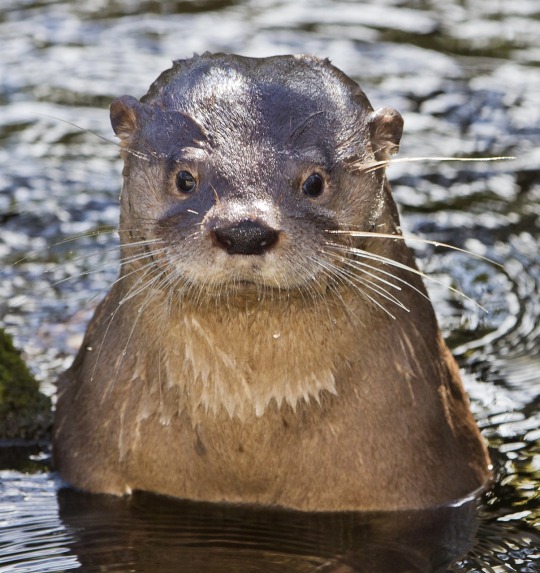
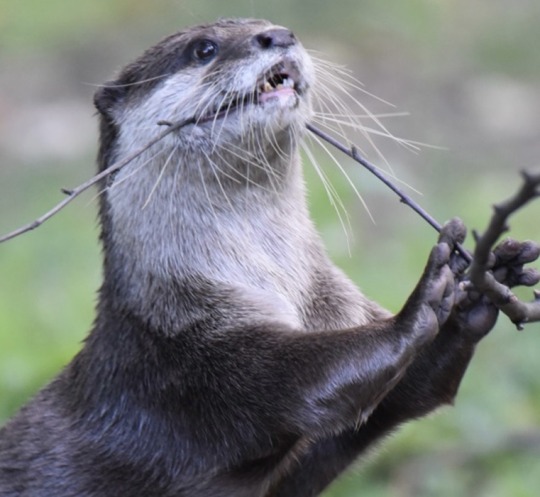
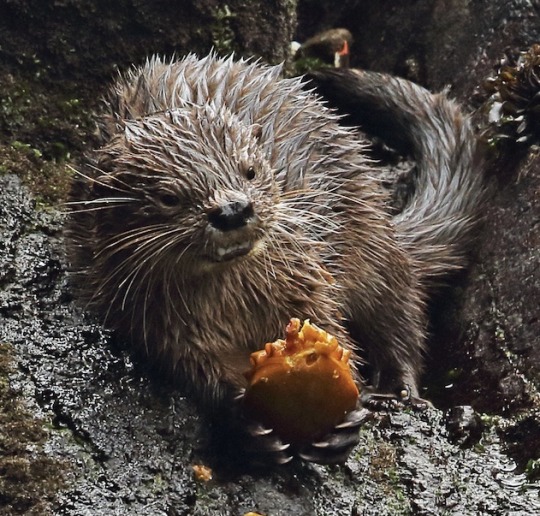

Image 1 : Southern river otter - Lontra provocax
Fun fact: Southern river otters live in freshwater with riparian vegetation. Riparian vegetation protects the water from hot summers and cold winters, shielding the waters so that the aquatic life living there won't become distressed.=(^.^)=
Image 2 : Asian small-clawed otter - Amblonyx cinereus
Fun Fact: asian small-clawed otters are the smallest of all other otter species. They also have whiskers called vibrissae that detects movement of prey in the water. ( ^w^)
Image 3 : Marine otter - Lontra Felina
Fun Fact: Marine otters are the only species with the genus Lontra that is found in marine habitats. Sometimes they even eat fruits! (╹◡╹)
September 19 , 2023(*^o^*)
@meowzerswhirlingsomewhere
#marine biology#ocean#rivers#fun facts#meow#marine science#scientific names#endangered species#aqua life#aquaculture#otters#sea otter#river otter#asian small clawed otter
70 notes
·
View notes
Text
#organic agriculture#aquaponics#aquaculture#symbiotic relationship#love#permaculture#education#entrepreneur#small business#join us#support communities#youth of america#farm
21 notes
·
View notes
Text
youtube
NEW SOLARPUNK IDEA. I don't think I've ever been in a house with a cistern, but apparently it's a thing. USE IT!
32 notes
·
View notes
Text
Candy enjoying the new 3 tunnel configuration!
#aquarium#betta fish#aquablr#betta#fish tank#neocaridina#planted tank#planted aquarium#shrimpblr#fish keeping#new fish#aquaculture#axolotl#animals#bettatank#bettablr
156 notes
·
View notes
Text

China, 2000
Nanning, Guangxi, China.
中国 広西 南寧市 西郷塘区
Photography by Michitaka Kurata
#china#guangxi#nanning#rural#suburbs#duck#aquaculture#photography#photographers on tumblr#color film#reversal film#slide film#35mm film#fujifilm#2000#中国#広西#南寧市#西郷塘区#農村風景#農村#郊外#アヒル#養殖#カラーフィルム#リバーサルフィルム#スライドフィルム#カラーポジ
87 notes
·
View notes
Text

New fish. Names????
21 notes
·
View notes
Text

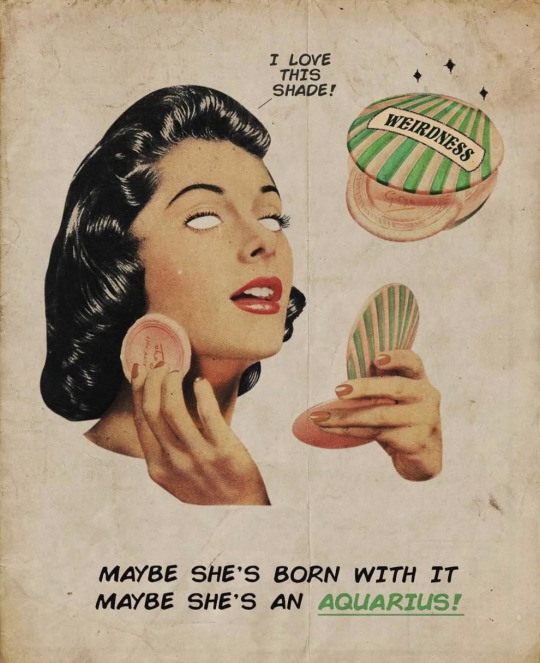
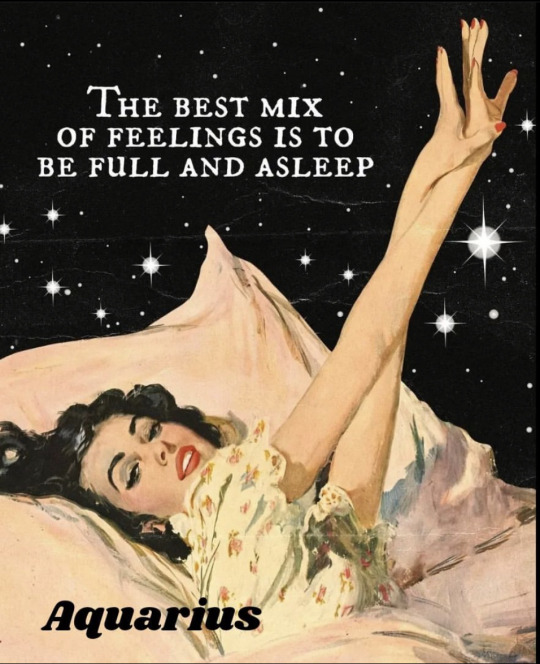

my sun sign
#zodic signs#zodiac#aquarius#aquaculture#astrology#astrological observations#astroloji#astrologia#it girl#girl blogger#air signs#libra moon#libra sun#gemini#aries zodiac#aries horoscope#aries#sagittarius#scorpio#capricorn#pisces#taurus#virgo mercury#leo
91 notes
·
View notes
Text

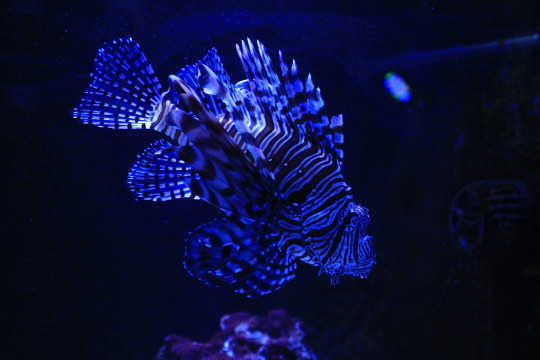
Lionfish
Taken: 02/19/23
#photography#original photography#photographers on tumblr#color photography#canon eos 2000d#canon t7#cute fish#fish#aquatic#marine life#sea creatures#lionfish#aquarium#aquaculture
16 notes
·
View notes
Text
Friend 1: Yeah my current special interest is Undertale!
Friend 2: That's so cool! My current one is Trigun!
Me:
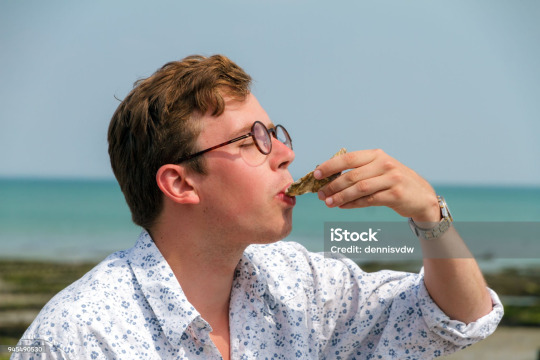
#neonazaleas#normal neon posting#autism#special interest#oysters#raw oysters#aquaculture#Listen I swear I'm normal.#I've been watching so many cooking videos...#and it has evolved into interest in aquaculture...#oh dear
14 notes
·
View notes
Link
The aquaculture industry is mad at seabirds for foraging fish. Meanwhile, almost all our waters are overfished by humans, who are also wiping out fish habitats while they are at it. The Cormorant diet consists of fish. It’s as simple as that. Just like bees feed on pollen and nectar.
It is easy for industries to blame cormorants for the decline of fish population, but the reality is much more complex...To produce fish, the restoration of natural habitats is key. Killing off cormorants won’t change anything – restoring the natural habitats of cormorants and fish, and sustainably managing wetlands, however, can provide part of the solution to these problems.
101 notes
·
View notes
Text
'Super seaweed' produces natural health compounds and medicine from the sea
According to the researchers, these findings may serve the pharmaceutical, cosmetics, food, and nutritional supplement industries. The study was carried out with the innovative and sustainable approach of integrated aquaculture, which combines seaweed with fish cultivation. This method benefits the seaweed while at the same time helping to purify the seawater and minimizing negative environmental Impacts.
19 notes
·
View notes